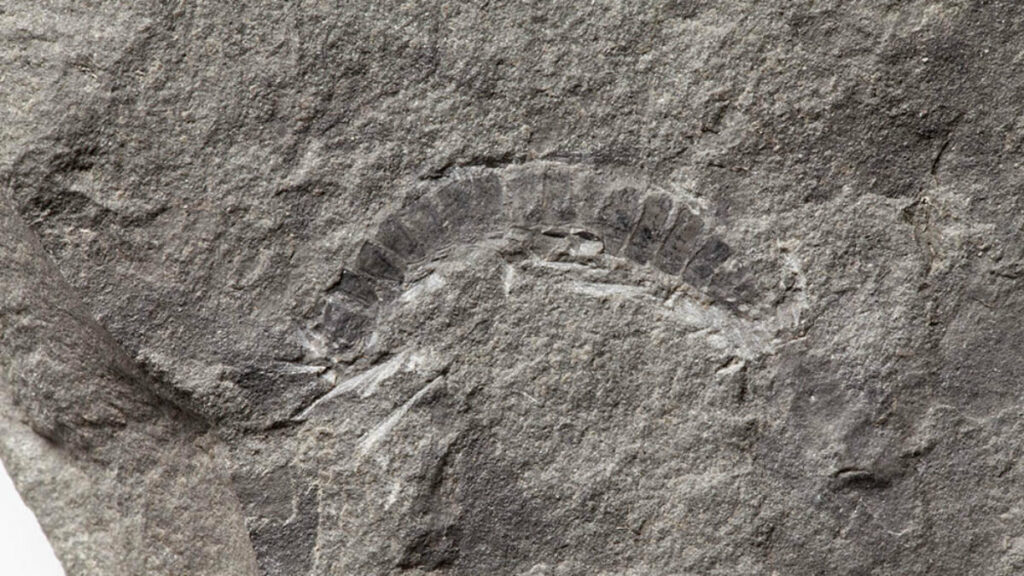A 425-million-year-old fossil millipede found on the island of Kerrera (Scotland) is the oldest known fossil of an insect, according to researchers at The University of Texas at Austin (UT).

Images British Geological Survey
The finding points to terrestrial insects (and the plants they ate) evolving at a much more rapid pace than previously assumed, the team explains. The age of this millipede (Kampecaris obanensis) would mean that terrestrial ecosystems evolved from humble water-hugging communities to sprawling, complex forests in just 40 million years.
Big, old bug
“It’s a big jump from these tiny guys to very complex forest communities, and in the scheme of things, it didn’t take that long,” said Michael Brookfield, a research associate at UT Austin’s Jackson School of Geosciences and lead author of the paper. “It seems to be a rapid radiation of evolution from these mountain valleys, down to the lowlands, and then worldwide after that.”
Using a refined dating technique developed in the Jackson School’s Department of Geological Sciences, the team established that the fossil is 425 million years old. This would put it at around 75 million years earlier than our previously estimated date for the first millipedes — as determined using a technique known as molecular clock dating, which is based on DNA’s mutation rate.
This finding ties in well with other research that found land-dwelling stemmed plants in Scotland were also 425 million years old and 75 million years older than molecular clock estimates.
Naturally, there could be older fossils of insects or plants out there, Brookfield notes, but they haven’t been found yet. So for now, we’ll have to use this as the earliest evidence of their presence.
Still, the fossil points to land ecosystems evolving and diversifying much more quickly than previously assumed.
The paper “Myriapod divergence times differ between molecular clock and fossil evidence: U/Pb zircon ages of the earliest fossil millipede-bearing sediments and their significance” has been published in the journal Historical Biology.






